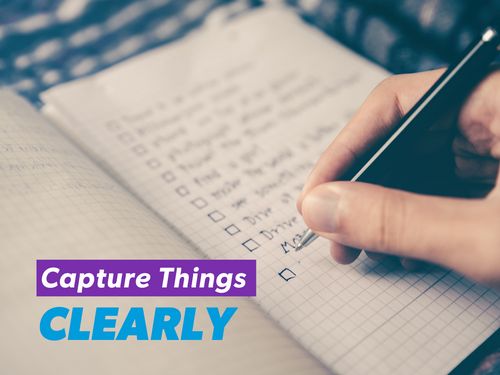The Tim Ferriss guide to note-taking: All you need to know
Nov 03, 2020 · 2 mins read
0
Share

Entrepreneur and author Tim Ferriss uses three different types of notebooks to serve various purposes – namely to focus, brainstorm and reduce anxiety. These simple techniques don’t need to be used every day, only as needed, but they can be life-changing. Here's how to do it...
Save
Share
The first type of notebook Ferriss recommends is a pocket-sized journal to jot down quotes, tips, thoughts and observations. Its true effectiveness comes from the practice of multiple passes, i.e. revisiting your notes on a regular basis.
Save
Share
Making multiple passes is “a systematic way of filtering the best stuff to the top of your attention”. When you revisit the notes, ask yourself: “Which of these ideas is worth remembering?” Highlighting and indexing the important parts acts as a process of distillation.
Save
Share
Create a box in the bottom-right corner of every page. After taking multiple passes of your notes, put any actionable next steps in this box. Number the pages and create an index at the start of your notebook. This helps convert ideas and observations into real change.
Save
Share
The next type of note-taking strategy that Tim Ferriss recommends is keeping Morning Pages. Capture any anxiety or distractions on paper first thing in the morning. It clears your mind to get on with the day. Ferris likens this process to having “spiritual windshield wipers”.
Save
Share
The Morning Pages technique was popularized by Julia Cameron’s book on creativity, The Artist’s Way. There’s no wrong way to do it: just write in a stream of consciousness for a few pages. You’re not looking for insight here; you’re just clearing your head of clutter.
Save
Share
Another type of note-taking Tim Ferriss recommends is the Five Minute Journal. This helps develop gratitude and focus. There are lots of notebooks and apps that come with a ready-made template for this, but the format is so simple that you could do it yourself anywhere.
Save
Share
Every morning, list three things you’re grateful for. Write a positive affirmation about yourself (“I am…”) and answer the question: “What would make today great?” At night, note three positive things that happened and answer the question: “How could I have made today better?”
Save
Share
What makes a Five Minute Journal effective is that it forces you to make succinct notes. Try to keep your gratitude list simple by noting basic things (e.g. your leather notebook). This trains you to notice small details, which naturally leads to noticing much bigger things.
Save
Share
Bottom line: Tim Ferris recommends three types of notebooks for three different purposes: a pocket notebook for digesting information and brainstorming, a Morning Pages notebook for clearing your mind and reducing anxiety, and a Five Minute Journal to improve focus and gratitude.
Save
Share
0